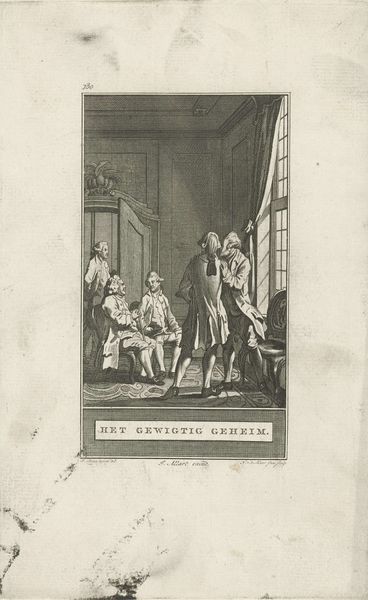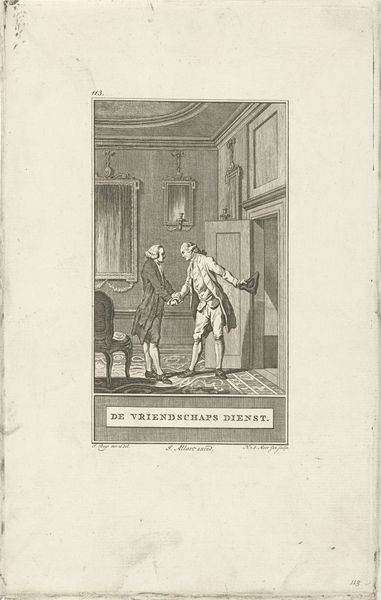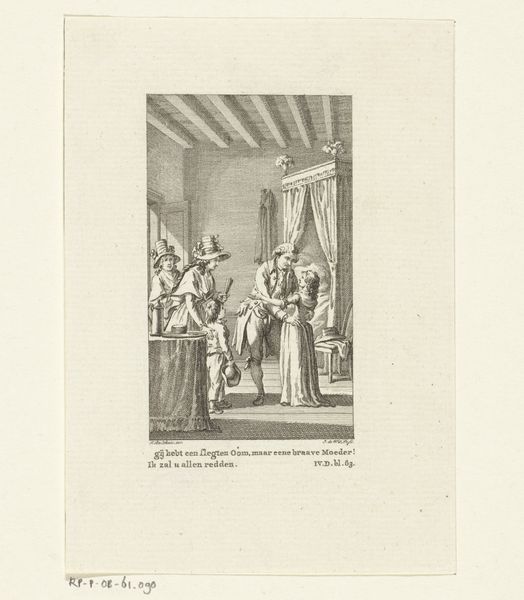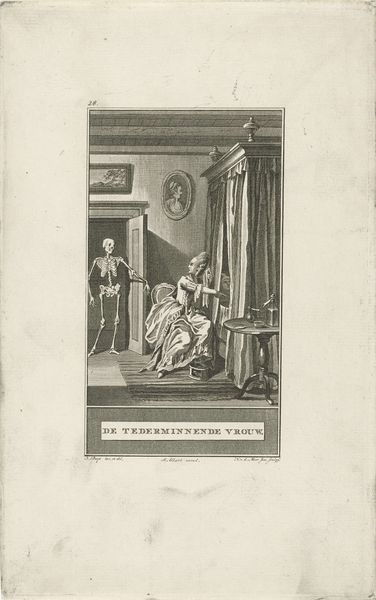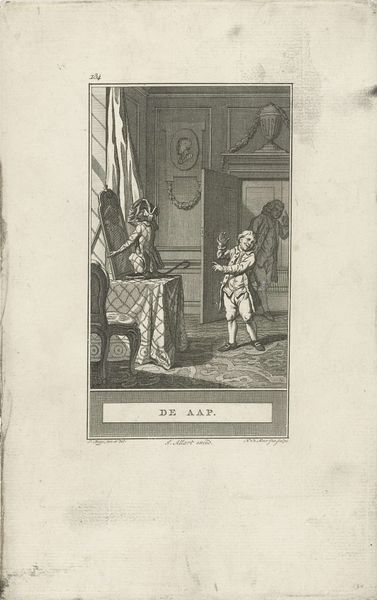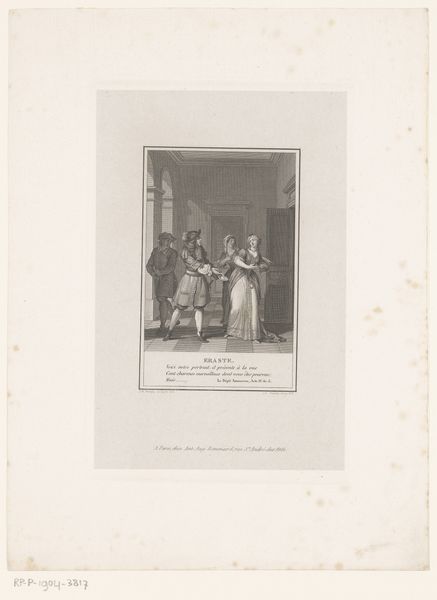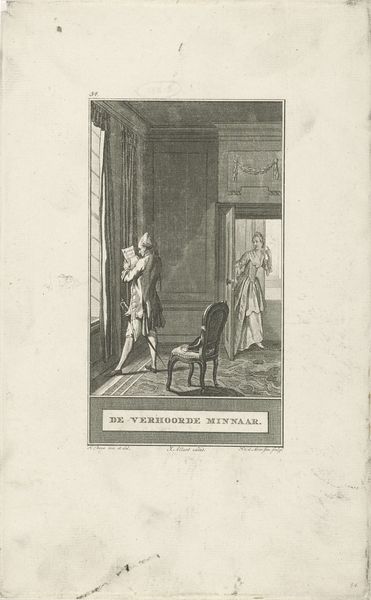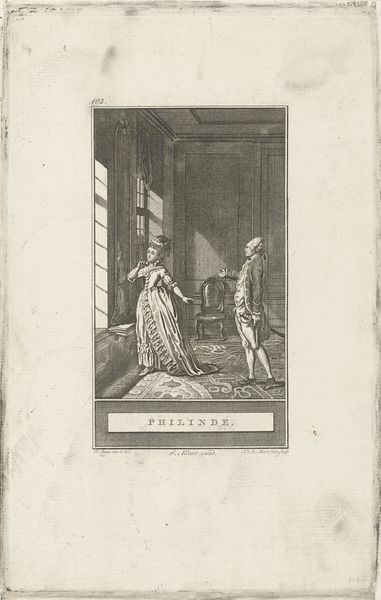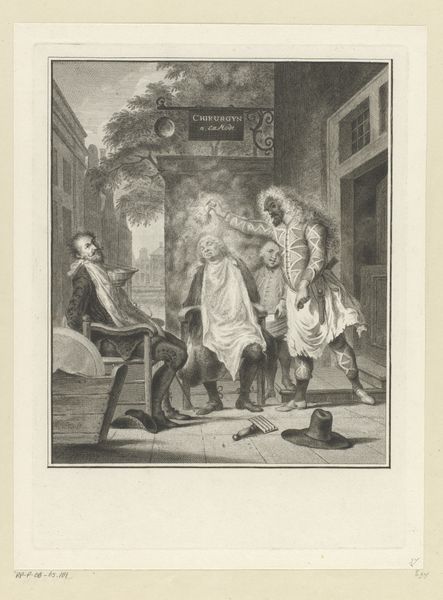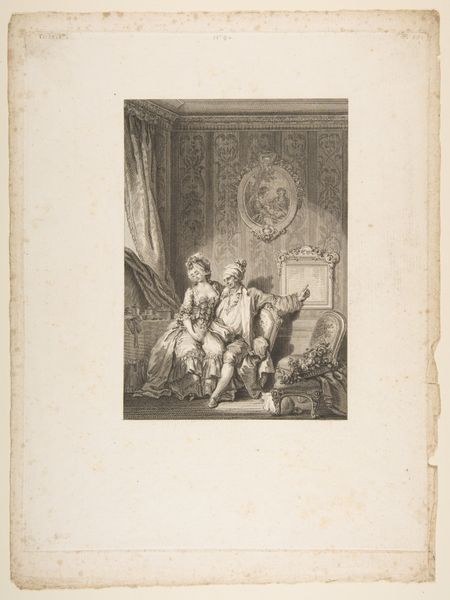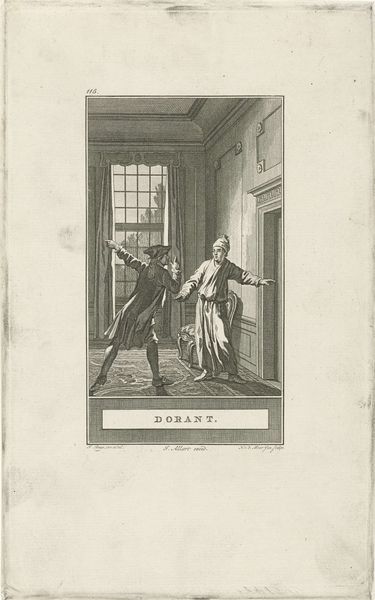
Dimensions: height 250 mm, width 155 mm
Copyright: Rijks Museum: Open Domain
Curator: Here we have "Losbandige Zoon," or "Prodigal Son," an engraving made sometime between 1778 and 1785, now residing here at the Rijksmuseum. It's attributed to Noach van der Meer the Younger. Editor: The image is…striking, actually. Stark. Immediately, I notice the intense dynamic between what looks like a mother and her son. Is he being scolded? Curator: Yes, I believe we’re seeing a pivotal moment in a classic narrative—the story of the prodigal son. Throughout art history, this tale resonates deeply, addressing themes of repentance, forgiveness, and societal expectations within familial relationships. Notice the woman, probably his mother, positioned authoritatively, directing an accusing finger. Consider how this gesture signifies not just disapproval, but a complex intersection of love, frustration, and moral guidance—encoded behaviors passed through generations. Editor: Her entire body is language. Bent over, hand on hip… the body remembers these gestures, doesn’t it? The slouch of shame, the stance of righteous anger. It speaks to this unending cycle that continues across generations. And there are the two gossiping figures in the doorway—perfect compositional timing. Are they family? Hired hands? Curator: Most likely neighbors or household staff—their presence amplifies the shame and public nature of this familial drama, while simultaneously adding another layer to our symbolic reading: judgement. This engraving acts like a moral play frozen in a moment of maximum tension and self-recognition. Engravings in the Baroque era were very often like morality plays distilled, right? Editor: True. And that interior—detailed, yet slightly cramped—contributes to this atmosphere of inescapable confinement and shame. Makes you wonder what became of the poor prodigal after that. Did he listen? Did she forgive? And, honestly, which role have I played? The gossiper in the doorway, maybe… Or both the scold and scolded, in my time. It just keeps going round and round. Curator: Indeed. This piece, as a rendering of the universal story, serves to remind us how such tensions continue to reflect within us, across centuries, and within the quiet moments of self-reckoning that visit us all. Editor: Absolutely, it echoes within…thanks to a few strategic lines and the ghosts they awaken.
Comments
No comments
Be the first to comment and join the conversation on the ultimate creative platform.


